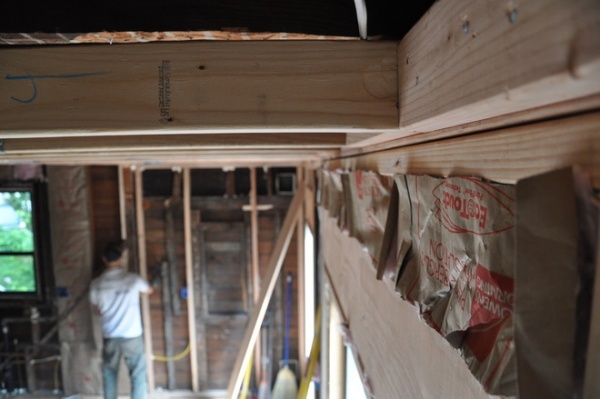Contractor Fees, Demystified
When you ask a contractor for an estimate, it usually includes the direct costs of construction plus a markup charged on some or all of those expenses. This is true whether you have a time-and-materials estimate or a fixed-price one, also known as a bid.
Ranging from 10 to 30 percent or possibly more, markups are often loosely described as covering overhead and profit, although they cover a wide range of costs that contractors incur while doing business. Be assured that whether you see that markup clearly or it is included in other costs, it is in there somewhere, because if it isn’t, your contractor can’t be solvent.
What kinds of overhead costs are you paying for through these fees, and how do those benefit homeowners as well as contractors? Here‘s a short list, which may vary by company and the state and county in which they operate.

Insurance. General liability (GL) and other kinds of insurance (for tools, leased equipment, workers’ compensation etc.) is often considered overhead. Some companies list their GL insurance as a line item on their estimates, because it is tied directly to revenue, but many cover it in their markups. GL policies generally cover a contractor’s operations. It is also possible with many policies to list homeowners and their architects as “additional insureds,” giving them added protection under the general contractor’s policy.
It is worthwhile for homeowners to consult with their own insurance agents ahead of a remodel to make sure they have all of their homeowners’ coverage in place, and that there are not exclusions for unoccupied homes or those under construction.

Taxes. General contractors pay a full range of taxes — federal, state, county and city — or fewer, depending on where they operate. In some states contractors are retailers, so they collect and remit sales tax along with paying their own revenue-based state taxes. If they have employees, contractors also pay their share of social security, unemployment and Medicare taxes for their staff.
The upside as a homeowner is that you are helping to keep your local economy healthy by improving your home. On a larger project, you may be keeping five or more people fully employed during construction, and there aren’t a lot of other opportunities to see your investment at work.
Labor burden. Payroll taxes, worker’s comp and other benefits add up to what’s known as the labor burden. That’s the overhead cost of having an employee working for the company. Those costs can include recruitment, training, taxes, medical coverage, paid time off, vacation, retirement and more. This “burden” can actually be a benefit to homeowners, who are able to hire companies with a fully compliant workforce that is well trained and feels well compensated with benefits. A full benefits package tends to draw top candidates. And isn’t that who you’d like working on your home?

Office and office staff. Contractors may own or rent their office spaces, or even work from their own homes, but offices come with a panoply of expenses. Aside from the cost of the space, there are many bills to pay: utilities, phones, landscaping, security and more. When contractors have office staff, they can be underwritten by overhead or may have their time billable to projects, depending on their job descriptions.
Offices provide a number of benefits to homeowners. Unlike a P.O. box, they are bricks and mortar — a place to meet the contractor in person. Need to review your bill or look at receipts? You know where to go. An office usually means there are office staffers who work at least in part on your project and handle all of your paperwork. Having a staffed office means the phone is consistently answered, and that the office is open during regular hours. That regularity of business operation is often a sign that paperwork is processed at expected intervals and that systems are in place to provide consistent customer service.

Transportation. Before building can be started, materials and people must arrive at your home. A contractor’s vehicles may be a part of that delivery process, and do everything from delivering materials to hauling away debris, dirt and concrete. Contractors may rent large equipment like backhoes and dump trucks (which require additional insurance coverage) or own them. Employees may even drive their own trucks for work, but contractors usually add insurance for those “nonowned autos” working on their behalf, and sometimes pay employees by the mile when they drive for work. The upside for homeowners is that there is potentially a whole fleet of vehicles working for them, and many companies cover some or all of their costs with markup.

Communication. Whether you hear from your contractor by phone, email, fax or snail mail, the cost of that communication is likely covered by the markup you pay. The list of communications tools contractors may use is long: computers and monitors, tablets, software and software updates, Internet service, office phones, smart phones, backup drives and backup services, envelopes and stamps. Having a number of ways to communicate and reach your contractor is essential, particularly if you plan to travel while your project is under way. So when your lead carpenter arrives with an iPad, see it not as a luxury, but as a sign that communication is a high priority for the company you hired.

Warranty. There is usually no line item for the warranty on your project proposal. That means warranty work is funded by the net profit the contractor generates. No one intends to redo work at his or her own cost, so most contractors will complete work that results in no or very few warranty calls.
Owner’s salary. In many contracting companies, the owner of the company’s salary is not billed directly to projects, because he or she has employees who manage projects. That means the salary must be covered by overhead. In larger companies that have dedicated sales, estimating, project development and design staff, those salaries may also be paid via the markup collected from projects.
Homeowners benefit from having a professional group of people working on their behalf and focused on specific tasks, rather than being pulled in many directions at once.

Marketing. Even contractors with a stellar reputation, a beautiful website and a six-month backlog need to market their business. Marketing almost always involves spending money, whether it’s on ads or sponsorships or other opportunities that get the name of a company out to potential clients.
Even though marketing may not strike you as valuable for your current project, if effective, it will ensure that your contractor stays in business in the long term. That means your contractor will be around to service your warranty, answer your questions and be onboard for the next project you plan. And it may be how you found him or her in the first place. Now that’s money well spent.
More: 10 Things to Discuss With Your Contractor Before Work Starts












